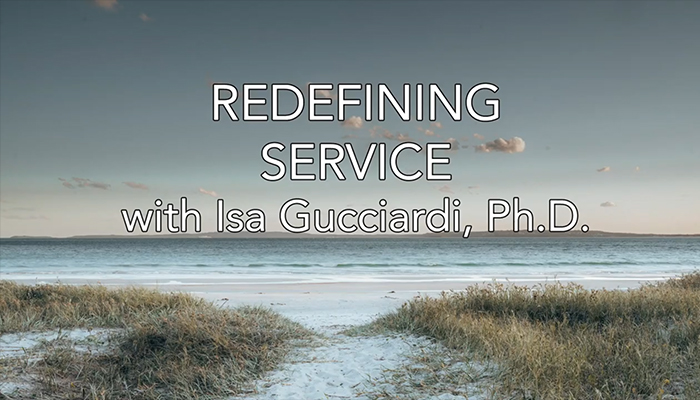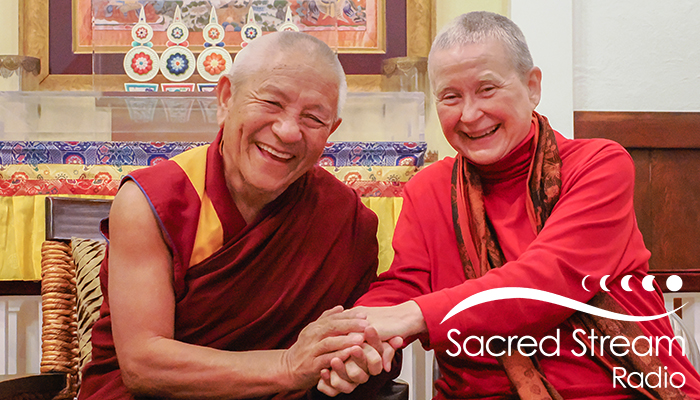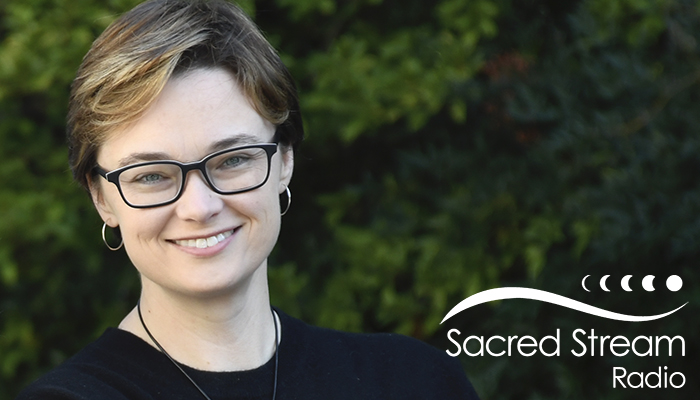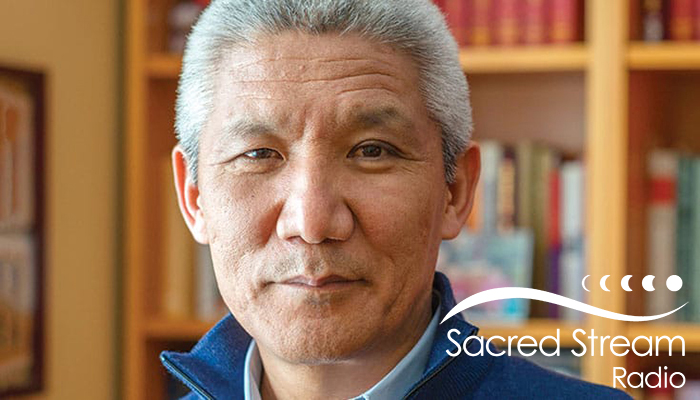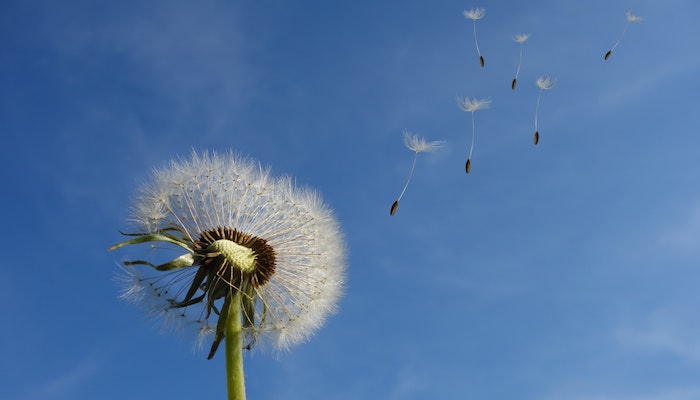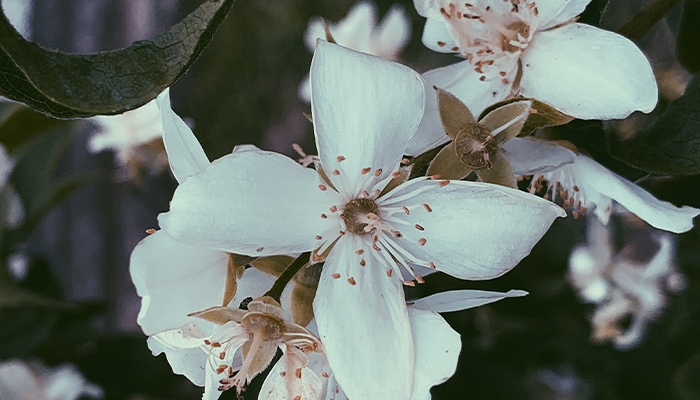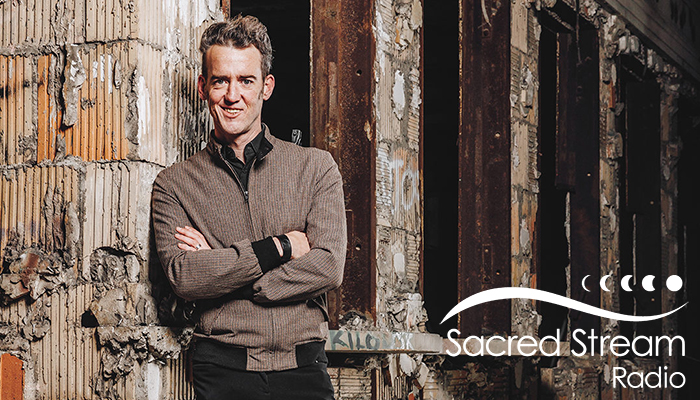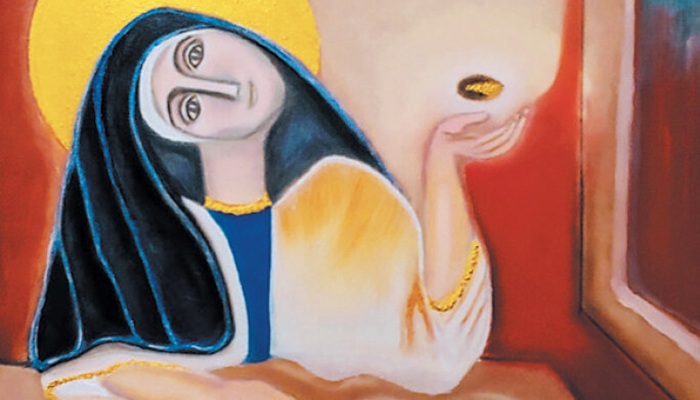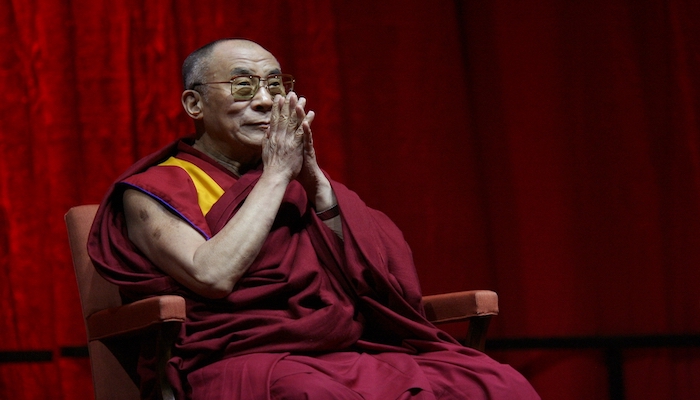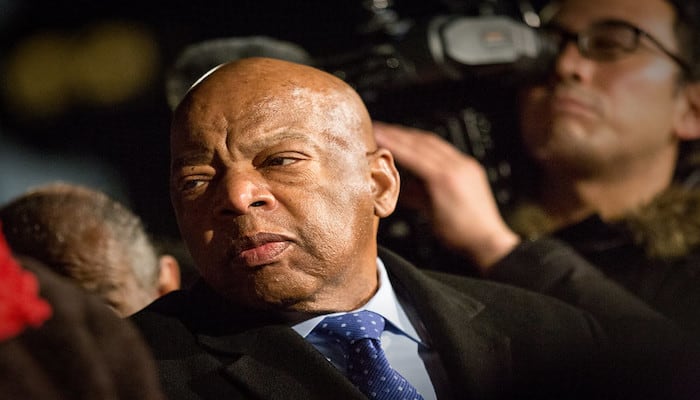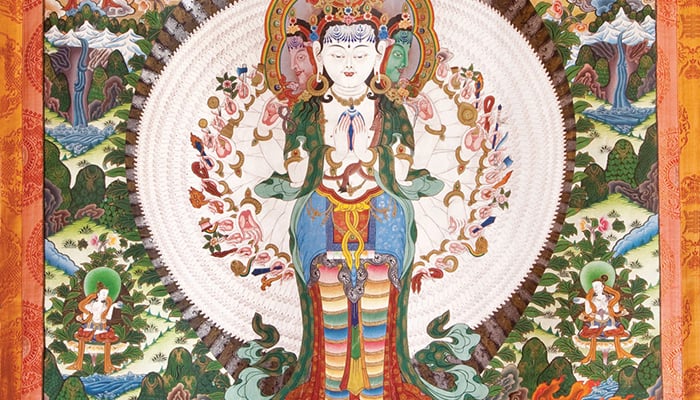Category: Compassion
Video: Finding Your Way Beyond Burnout: Redefining Service with Isa Gucciardi
In this talk, Isa Gucciardi challenges us to reimagine the way we approach work, life, and service. Many of us are in a state of distress as we try to grapple with the many collective and personal challenges we are facing. This can lead us to push ourselves too hard as we try to make a difference in our own lives and in the lives of those around us. This is especially true for those of us who are trying to manage the demands of family and work and for those of us who are in nonprofit or humanitarian kinds of work. Isa asks us to look at our expectations of ourselves as we try to help others.
Podcast: Episode 95: Geshe Pema Dorjee: A Life of Compassion: Part 2
On this episode, Isa Gucciardi, Ph.D. is our guest host, and she continues the conversation from our last episode with Geshe Pema Dorjee, picking up where Laura and Geshe-la left off. They discuss his life in India after escaping from Tibet. He recounts his adaptation to a new way of life – the difficulties as well as the joys. He describes his early encounter with the street children of Nepal who helped him when he needed it most and who inspire his humanitarian efforts to this day. His fascinating story includes his time as the head of the Children’s Village in Dharamsala and his work to preserve the Bodong tradition of Tibet. He also discusses the many projects he has ongoing to help the poor and disenfranchised people of Nepal and northwestern India. His humor, sincerity, and kind spirit shine through in this at-times playful and engaging conversation with his longtime friend, Isa.
Podcast: Episode 86: Rev. Cameron Trimble: Progressive Christianity and Spiritual Leadership
On this episode, Laura interviews Rev. Cameron Trimble – author, pilot, CEO, and Co-founder of Convergence, an international church consultancy. Cameron is part of a progressive movement in Christianity and spiritual leadership and on this episode she talks with Laura about her activism and the importance of diversity in spiritual movements. In her over 25 years as an out queer woman minister, she reflects on the changes she’s seen in the Christian church and offers her view of the future.
Podcast: Episode 85: Thupten Jinpa: Mindfulness in the Modern Era
On this episode, we reach back into the archives for this talk by esteemed author and Buddhist scholar, Thupten Jinpa, Ph.D., given at the Sacred Stream Center in Berkeley, CA, in 2018. Jinpa is a longtime friend and advisor to the Sacred Stream and he is the author of several books, including A Fearless Heart: How the Courage to Be Compassionate Can Transform Our Lives and Tsongkhapa: A Buddha in the Land of Snows. In this talk, Jinpa discusses the universality of spiritual traditions, his relationship with the Dalai Lama, and the modern mindfulness movement.
Article: Tonglen – An Integrated Energy Medicine Point of View
By Joanna Foote Adler, PsyD, CHT
Much has been written on the practice of Tonglen, the Tibetan Buddhist meditation practice of giving and taking. Tonglen is a powerful and important practice in many of the schools of Buddhism. I would like to offer some thoughts to add to this literature from the perspective of Integrated Energy Medicine as it is taught at the Foundation of the Sacred Stream, which will hopefully help to focus this practice for western practitioners in a skillful way.
Let’s start by defining Tonglen. Tonglen is a meditative practice for cultivating love and compassion through giving and taking. The focus in this practice is to embrace (rather than reject) unwanted and painful aspects of experience, and to work to overcome fear and develop greater compassion for others. The opportunity here is to change the attitude towards pain and to open the heart as one visualizes dissolving pain. In this practice, one uses the breath in conjunction with a specific visualization. One visualizes or imagines taking in the pain and suffering of others on breathing in, and then visualizes breathing out love and peace for the other.
Tonglen is a practice said to help develop wisdom and compassion on both the relative and absolute levels of reality as they are understood in Buddhist philosophy. These levels are known as the Two Truths. Talking about these levels of reality gets us into deep philosophical water, but for the purposes here we can understand that the relative level of existence refers to the everyday ordinary world experienced as solid and “real.” The ultimate level of reality in Buddhism points to the understanding that reality is actually “empty” in that it is always changing, and that all things depend on or originate from the causes and conditions that came before them. Tonglen points us towards letting go, towards releasing the clinging to our sense of self and to the attachment held when one believes they are permanent beings. In different ways on the relative and absolute levels, Tonglen practice can reverse resistance to pain and help develop the enlightened mind qualities of equanimity, love, and compassion in the face of suffering. The concepts of relative and absolute levels of reality are helpful here in the exploration of how Tonglen practice works.
As the Founding Director at the Foundation of the Sacred Stream, Dr. Isa Gucciardi teaches courses of study in Applied Buddhist Psychology and Integrated Energy Medicine, among others. She teaches that one way to understand Tonglen is as an energy medicine practice.
Article: To Weave a New World: Shamanic and Tantric Practice
By Isa Gucciardi, Ph.D.
To enter the world of Tantra is to enter a world beyond the ordinary. Through a series of catalytic processes, the spiritual seeker is drawn along a path that promises nothing less than the revelation of the nature of reality. This is a promise that also lies at the heart of shamanic practice. Yet the ‘reality’ that reveals itself when the shamanic initiate steps beyond the threshold of ordinary awareness is conceived of differently than that of Tantra.
The reality that is the focus of Tantra lies in the understanding of the human mind. The reality that is understood through shamanic practice emerges through an intimate interface with the unseen powers of the natural world. These two realities are not exclusive from one another, but the thrust and focus of these two practices are at least initially different.
Both systems provide stages of development to educate the initiate as they deepen their understanding about the nature of reality. These stages of development constitute the heart of the practices. Let’s explore these wisdom traditions further and deepen our understanding of how these two paths cross and separate in the process of providing an education about the nature of reality.
Blog: Thoughts at the Spring Equinox
By Isa Gucciardi, Ph.D.
As I was untangling the new prayer flags to put up at the Sacred Stream Center for Losar, the Tibetan new year, I realized that the spring equinox this year falls right between the Tibetan new year in early March and the Khmer new year in mid-April.
Both of these celebrations were originally harvest celebrations in Tibet and Cambodia. They were also a time when people made offerings and affirmed their connections to the natural world and its cycles of time.
Within the rhythm of nature’s time, the spring equinox is the moment when the nights and the days are of equal length. It is a time when the sun rises directly due east and sets directly due west. It is the time of the year when the sun rises most quickly and sets most quickly.
Podcast: Episode 78: Lisa Broderick: All the Time in the World
Description: On this episode of the Sacred Stream Radio Podcast, Laura Chandler speaks with author, senior executive, and founder of the non-profit Police 2 Peace, Lisa Broderick. Lisa is an accomplished senior executive whose career has been defined by understanding how technology impacts society and changes behavior. She teaches that life is about constant change, in which energy and matter are the basis of transformation. Her passion lies in helping others with little or no scientific or spiritual training master their innate abilities with practices designed to improve their lives, their relationships, and the world.
Podcast: Episode 76: Christopher Tait: Passenger Recovery
On this episode, Laura talks with Christopher Tait of Passenger Recovery and Detroit rock bands Electric Six, Belle Ghoul, and Palace Pier. Chris has been with Electric Six since 2002 and has earned a gold record among other accolades. Sober since 2011, he formed Passenger Recovery in 2016, a small non-profit based in Detroit, to help sober artists and crew that are on the road connect with resources for traveling in recovery, including transportation to meetings locally. Since its inception, it has grown into an international organization helping artists worldwide.
Article: Book Review: A Fearless Heart: How the Courage to Be Compassionate Can Transform Our Lives
By Barry Lipscomb
Reading A Fearless Heart was a very powerful, transformative, and healing experience for me personally. This was heightened by reading the book the same week I began the Sacred Stream’s Applied Buddhist Psychology 1: Entering the Stream class, and started practicing Shamata meditation. It seems my heart is breaking open and expanding in new directions, as if compassion and loving-kindness is the last frontier.
I find myself already genuinely wanting other beings to be free of suffering, spontaneously doing small acts of kindness with the recognition that, just like me, all beings want to be happy. By the middle of the week in which I was reading the book, I began a new practice of engaging someone from work each morning by text or Slack, to just say hello and ask how they are doing. It was only later in the week that I connected this new practice to my reading of Jinpa, and my morning Shamata meditation.
Article: Book Review: Julian of Norwich: Wisdom in a Time of Pandemic
By Isa Gucciardi, Ph.D.
Matthew Fox’s new book, Julian of Norwich: Wisdom in a Time of Pandemic is educational in many ways. Not only is it a revelation about a female Christian mystic whose wisdom should be more widely known, but it is a window into the history of 14th century Europe, and the long-lasting effects the bubonic plague had on society and culture. This book could not be more timely.
Reverend Fox has been an ardent preservationist of the mystic streams of thought within Christianity throughout his long career. He has kept this esoteric philosophy front and center in popular discourse in a way that has served thinkers from all traditions. He wrote the first modern book about Hildegarde von Bingen, the 11th century Benedictine nun who founded her own abbey and infused the work there with the fruits of her visions, her poetry, and her prophesy.
Like Hildegarde’s contributions, Julian of Norwich’s work informed Christian thought in ways which have not always been fully acknowledged or appreciated by the church. Both women’s offerings receive the attention they deserve through Fox’s efforts. In spite of the fact that Julian of Norwich’s Revelations of Divine Love is the earliest surviving book by a woman ever published, it is not widely read. Yet, her writings about her visionary experience and the ecstatic relationship with the Divine are still as profound, fresh and universal today as when they were written. We are lucky to have Fox point our attention to her reflections on her life and the times of plague through which she lived.
Blog: His Holiness, the Fourteenth Dalai Lama
By Isa Gucciardi, Ph.D.
“We all share an identical need for love, and on the basis of this commonality, it is possible to feel that anybody we meet, in whatever circumstances, is a brother or sister. No matter how new the face or how different the dress or behavior, there is no significant division between us and other people. It is foolish to dwell on external differences because our basic natures are the same.”
-The Dalai Lama
His Holiness, the Fourteenth Dalai Lama, is a role model of compassion and courage for millions of people around the world. He has, almost single-handedly, stared down the Chinese government as it has dismantled Tibet and turned it into a Chinese fiefdom. He has done this without ever uttering an unkind word as he has watched thousands of his countrymen and women die at their hands.
His Holiness, the Fourteenth Dalai Lama was born in 1935 in Amdo, Tibet. His birth name was Lhamo Thondup. When he was two, he was recognized through a series of signs as the fourteenth incarnation of the Dalai Lama. He was sent to a monastery where he studied Buddhist philosophy.
In 1958 and 1959, as he was taking his final examinations, the Chinese, who had been in Tibet for several years, overran the country. His Holiness barely escaped. Thousands of other Tibetans were not so lucky. The Chinese killed and tortured thousands of Tibetans and destroyed many of the monasteries that had housed the ancient wisdom of Tibet and Buddhism for centuries. The losses of the Tibetan people were overwhelming.
Blog: John Lewis and the Good Trouble Path of Peace
By Laura Chandler
In a commencement speech he gave at Emory University, the late civil rights leader and Congressman from the 5th District of Georgia, John Lewis said, “You must find a way to get in trouble, good trouble, necessary trouble.” For decades, getting into good trouble has been the creed of Lewis, described as the “Conscience of Congress” by House Speaker Nancy Pelosi. His death on July 17, 2020 comes at a time of great social unrest in this country, yet his legacy offers us an example of how to proceed in these times and, even more importantly, it offers us hope.
Lewis was the last living member of the Big Six leaders who organized the 1963 March on Washington, and he led the historic first march across the Edmund Pettus Bridge, which became known as Bloody Sunday. His actions and work with the civil rights movement contributed to ending legal segregation in the United States and he continued his work and lifelong commitment to social justice and the causes of democracy, serving 17 terms in the US House of Representatives.
John Lewis’ life was one of activism informed by his faith. He was dedicated to nonviolence and learned the concepts of nonviolent protest through his study of Christian texts, trainings with the Nashville Christian Leadership Conference, and the example set by Mahatma Gandhi. Like Gandhi, Lewis and the participants in the early civil rights movement understood the power of nonviolent action and stood bravely in the face of oppressive hostility. Lewis endured physical beatings and was arrested over 40 times without succumbing to violence himself, and he held to this principle of nonviolence his entire life.
Video: Isa Gucciardi, Ph.D.: Reading Thangkas: Avaloketishavara and the Images of Compassion
Thankgas are paintings on fabric that often depict meditational deities or subjects. Popular throughout the Himalayas for centuries, they have provided a teaching and practice tool to help students deepen their understanding of a particular deity or subject. There are many images of Avaloketishavara or Chenrezig as they are known in Tibetan.
In this talk with the San Francisco Dharma Collective, Isa Gucciardi explores these images of compassion and the wisdom of the deities depicted therein.

